
Last fall, the Good Shepherd Lutheran Church had a pumpkin patch with a trebuchet. They launched a few pumpkins for the kids.
Their design was simple — not for competition, but something I’d like my students to emulate sometime.
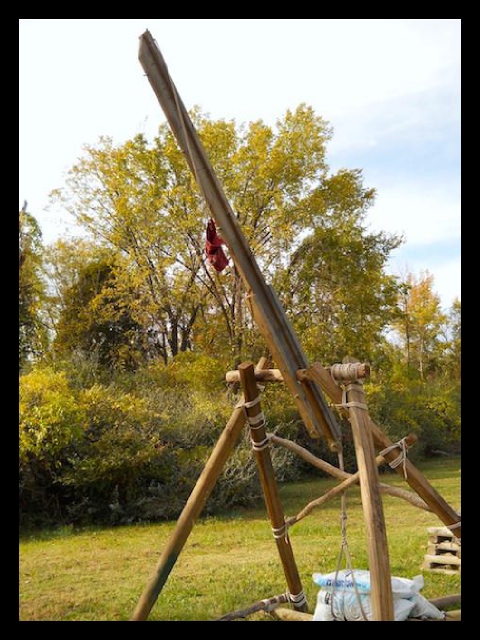
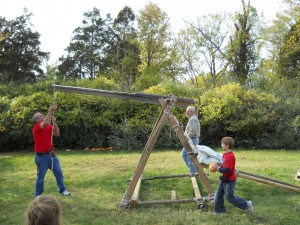
Middle and High School … from a Montessori Point of View

Last fall, the Good Shepherd Lutheran Church had a pumpkin patch with a trebuchet. They launched a few pumpkins for the kids.
Their design was simple — not for competition, but something I’d like my students to emulate sometime.



Although it was high in sulfur, the quarry company mined the thin coal seam that cut across the limestone quarry/landfill.
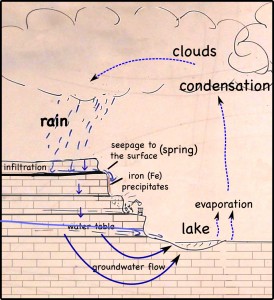
The layer of coal is pretty impervious to water, so it blocks vertical infiltration of water, which forces the water to the surface as springs.
At the surface, when the water is exposed to oxygen in the atmosphere, dissolved iron precipitates to produce a red mineral that stains the quarry walls.
The iron gets into the water when pyrite crystals (FeS2) in the coal dissolves. While the iron precipitates, the sulfur remains in the water, making it more acidic. Dealing with the acid can be a huge problem in large coal and metal mines.

Not all the pyrite is dissolved however, and since this particular coal seam has a lot of pyrite, it is not economical to burn since the burnt sulfur (as sulfur dioxide gas) would have to be captured — otherwise it produces acid rain.
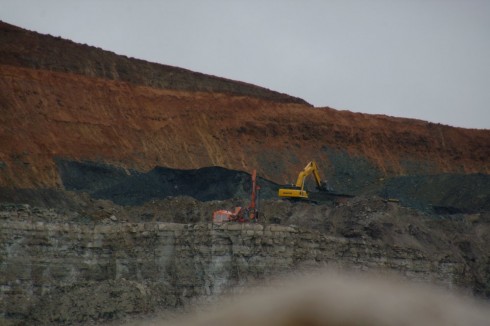

Although we’re not precisely sure why, the choir was quite the popular choice this year. The students are enthusiastic, and our music teacher, Mr. E., does an awesome job. It’s really nice to run into them practicing in the commons.
In this case they were in the Keeping Room — long, vaulted ceiling, remarkable acoustics. They practiced at one end; people accumulated at the other.
[Sarcasm] appears to stimulate complex thinking and to attenuate the otherwise negative effects of anger
— Miron-Spektor et al., 2011. Others’ anger makes people work harder not smarter: The effect of observing anger and sarcasm on creative and analytic thinking. in J. Applied Psychology via Smithsonian Magazine.
If there’s anyone for whom sarcasm is a primary language, it’s probably adolescents. It can be used to bully or put down, but, according to Richard Chin (2011), is more often used among friends; a bit like positive aspects of teasing.
Chin has a good article that looks over recent research into how sarcasm works on Smithsonian.com.
Apparently, sarcasm exercises the brain more than regular comments:
… observing anger communicated through sarcasm enhances complex thinking and solving of creative problems”
I told my two (elementary aged) kids that if they didn’t behave Santa would fill their stockings with coal. They were so excited. Since the coals we use on the grill can’t melt metal, they were hoping some real coal would burn hotter. They want to make rings.
I have a neat little tea strainer that sits inside my almost perfect teacup, yet I’m usually at a loss about what to do with it when I take it out of the cup. When the lid is upside down, the strainer can sit nicely into a circular inset that seem perfectly designed for it; however, if I want to use the lid to keep my tea warm — as I am wont to do — I have to move the strainer somewhere else.
One option is to just put the strainer in another cup, but then air can’t circulate around it, and instead of drying, the used tea leaves stay wet and, eventually, turn moldy. A flat saucer would be better, but not perfect.
Of course, I could just empty out the strainer, wash and dry it as soon as I’m done steeping the leaves, but there are a few ancillary considerations with respect to time that make this a sub-optimal solution.
So, since we have a kiln on campus that sees regular use, I thought I’d sit in on the Middle School art class and make my own ceramic tea strainer holder. Since I’ve also been thinking about Philip Stewart’s spiral, and de Chancourtois‘ helictical periodic tables, and been inspired by Bert Geyer’s attempts at making sonnets tangible, it eventually occurred to me that an open helictical form would work fairly well for my purposes.
I’ve cobbled together a design using Inkscape, and layered it onto a cylinder in Sketchup to see what it would look like.

So far the reactions from students has been quite diverse. I have one volunteer who’s wants to help, and I’ve sparked some discussion as to if what I’m doing actually qualifies as art. There is a lot of curiosity though. The middle-schoolers will probably be doing some type of physical representation of the periodic table, so I’m hoping this project gets them to think more broadly about what they might be able to do.

Jason Shankel has an article on how we could go about changing the surface of Mars into something humans can live on. He does an excellent job of condensing the not insignificant literature on terraforming the red planet.
Starting with an explanation of Mars’ geologic history, Shankel addresses Martyn Foggs’ list of critical challenges:
- The surface temperature must be raised
- The atmospheric pressure must be increased
- The chemical composition of the atmosphere must be changed
- The surface must be made wet
- The surface flux of UV radiation must be reduced
— Shankel (2011): How We Will Terraform Mars on io9.com.
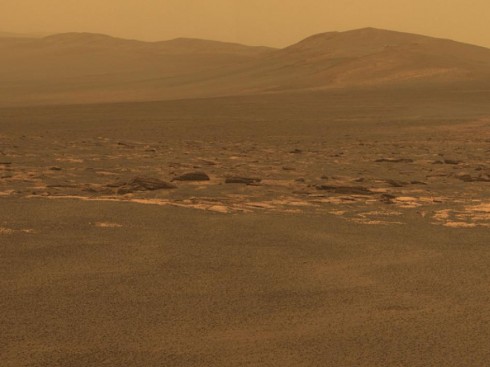
The article is expansive in its detail, provides a wonderful primer on the red planet, and demonstrates an excellent application of planetary system science (as opposed to Earth system science) to what would be an enormous geoengineering project. For example, to warm up the planet, Shankel starts with several approaches:
so how do we warm up the Martian poles? Several approaches have been suggested, from spreading dark material on the poles to lower their albedo, to industrial ice farming to good old fashioned thermonuclear detonations.
— Shankel (2011): How We Will Terraform Mars on io9.com.
He then goes into detail. Lots of detail, in a quite readable form.
